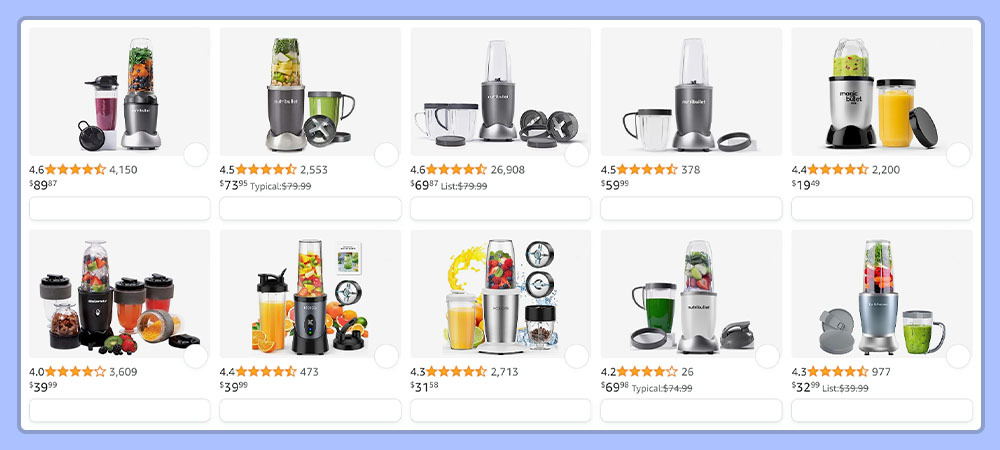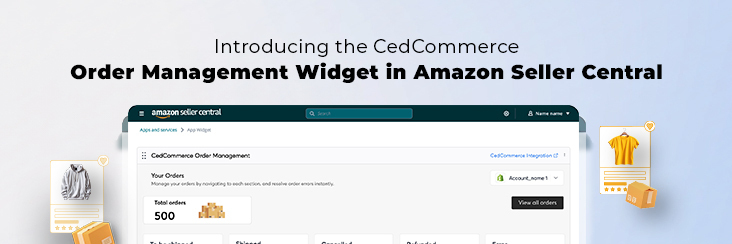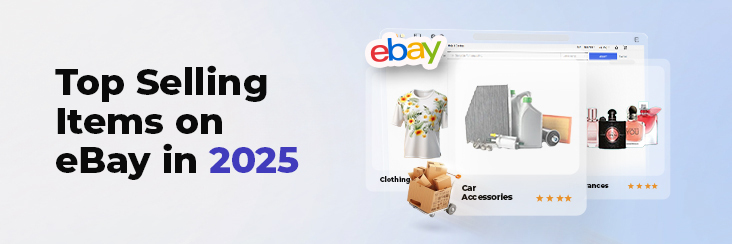Walmart Embraces Amazon MCF: A New Era of Cross-Platform Fulfillment for eCommerce
Walmart Embraces Amazon MCF: A New Era of Cross-Platform Fulfillment for eCommerce
The eCommerce world is vast, and marketplaces like Amazon and eBay offer a gateway to a massive audience. But what if you could reach beyond the walls of a single account? Imagine diversifying your product offerings, testing innovative product strategies, or building a more robust online presence. This is the power of being able to manage multiple seller accounts on Amazon & eBay!
If you’re looking to grow your business in new areas, manage different brands separately, or experiment with sales tactics, having an additional seller account could be the answer. In this blog, we will provide you with the information and strategies to manage multiple seller accounts on Amazon, and eBay.
By the end, you will be able to handle multi-account selling, while staying compliant with regulations for such accounts.
While Amazon adheres to a one-seller-account-per-seller policy by default, this is only to ensure a fair and organized marketplace for both sellers and customers. However, they understand the needs of growing businesses and acknowledge situations where having multiple Amazon seller accounts might be beneficial.
The key to accessing additional accounts lies in demonstrating a legitimate business need. This concept allows established businesses to multiple Amazon seller accounts through separate accounts. Additionally, here are some examples of how Amazon perceives legitimate business needs:
Note: This is not a complete list of business needs that would necessitate opening multiple Amazon seller accounts. Amazon’s policy uses the term “examples,” indicating an inexhaustible list of such possibilities.
Here are the steps to follow once you have decided to apply for multiple Amazon seller accounts:
Furthermore, you can increase your chances of Amazon approving your request by understanding these guidelines and presenting a compelling case, for additional seller accounts.
Account Suspension: A suspended account means you lose access to your listings, inventory, and potentially even the funds held by Amazon.
Loss of Selling Privileges: In severe cases, Amazon might permanently revoke your selling privileges. This essentially bans you from selling on their platform altogether.
Wasted Time and Resources: The effort you invested in building your store, managing inventory, and acquiring customers all goes to waste with a suspended account.
Financial Penalties: Amazon might withhold your funds during the investigation and suspension period. Additionally, depending on the severity of the violation, they might impose financial penalties.
Difficulty in Regaining Approval: Even after resolving the suspension, regaining Amazon’s trust can be a challenge. You may face increased scrutiny on your future activities and stricter adherence to their policies.
Remember, operating multiple Amazon seller accounts requires careful management and strict adherence to Amazon’s policies to ensure a smooth and successful experience.
Moving on to eBay, the marketplace offers more flexibility, as it allows sellers to have multiple accounts under certain conditions, which can be beneficial for reasons like brand segregation or product category separation.
Similar to Amazon, transparency is crucial. Each account needs to have distinct identifying information and operate independently.
Overall, while eBay offers more flexibility for managing multiple seller accounts, responsible management and adherence to their policies are still crucial to avoid account suspension.
Here’s when and how to request additional accounts:
Regardless of how many accounts you have, eBay expects you to manage each one effectively and adhere to its highest buyer and seller standards. These standards cover areas like performance, risk management, and best practices. They’re in place to ensure a safe and positive experience for everyone on eBay.
Read more about eBay’s multiple account policy here.
Now that we have explored the importance of adhering to policies and the potential consequences of missteps, let’s discuss how you can manage this high-stakes balancing act of multiple Amazon seller accounts.
Leverage Amazon’s extensive reach while strategically expanding your presence by becoming a multi-account Amazon seller! Here’s why:
1. Product Segregation:
Think of your inventory as a diverse crowd. The way you wouldn’t place designer products next to those on sale in a brick-and-mortar store, the same logic applies to Amazon. Multiple accounts allow you to create specialized storefronts.
For example, if you sell products from multiple skincare brands on Amazon, wouldn’t it be more effective to them on different storefronts? This targeted approach allows you to tailor product descriptions, promotions, and even branding to resonate with a specific audience!
2. Inventory Management:
 Also, multiple accounts can help by separating high-volume items like phone chargers from low-volume specialty goods like handmade pottery, you streamline inventory management. This makes it easier to track stock levels, optimize fulfillment strategies, and ensure a smoother customer experience across the board.
Also, multiple accounts can help by separating high-volume items like phone chargers from low-volume specialty goods like handmade pottery, you streamline inventory management. This makes it easier to track stock levels, optimize fulfillment strategies, and ensure a smoother customer experience across the board.
3. Testing Strategies:
 While experimentation helps you learn & grow, tweaking prices, marketing strategies, or fulfillment methods in your main store could potentially disrupt your established customer base! This is where multiple accounts become your secret weapon.
While experimentation helps you learn & grow, tweaking prices, marketing strategies, or fulfillment methods in your main store could potentially disrupt your established customer base! This is where multiple accounts become your secret weapon.
This is why having multiple accounts allows you to gather data-driven insights by testing different approaches with A/B testing, helping you discover what truly resonates with your customers.
Managing multiple Amazon seller accounts can be a powerful tool for growth, however, it also comes with its own set of challenges. Here’s a breakdown of the hurdles you might face and how to overcome them:
1: Juggling Inventory Across Accounts
Keeping track of inventory levels across multiple accounts can be a logistical nightmare.
The risk of overstocking on one account while another faces stockouts increases.
Solution:
Utilize third-party services to sync inventory data across all your accounts, providing a centralized view and streamlined updates.
2: Maintaining Brand Consistency
Inconsistent branding across accounts can confuse customers and dilute your overall brand identity. Additionally, creating consistent product descriptions, images, and marketing messages can be time-consuming.
Solution:
Develop a brand style guide that outlines your brand voice, logo usage, and messaging. Also, create pre-formatted product descriptions and marketing materials to save time and ensure consistent messaging.
3: Time Management and Organization
Managing listings, orders, and customer service across multiple accounts can be overwhelming.
Solution:
Implement scheduling tools and prioritize tasks to stay on top of your workload. Utilize communication platforms that integrate with your Amazon accounts to handle inquiries efficiently.
4: Policy Compliance Across Accounts
Managing multiple accounts increases the risk of unintentional policy violations due to oversight. Moreover, violating policies on any account can lead to the suspension of all linked accounts.
Solution:
Regularly review and stay updated on Amazon’s seller policies to ensure compliance. Plus, maintain distinct login information and IP addresses for each account to avoid any appearance of manipulation.
These challenges might seem daunting at first, however, there is nothing in eCommerce that cannot be solved with innovative technology! The multi-account challenge requires the right strategy and robust tools.
Here is where we introduce the CedCommerce Amazon Channel which enables you to manage multiple Amazon seller accounts and minimize headaches.
Lastly, if you’re opting for additional accounts, you must leverage CedCommerce Integration’s comprehensive features and multi-account capabilities, to navigate & manage multiple Amazon seller accounts with confidence.
The world of eCommerce is brimming with opportunities, and managing multiple seller accounts can be a strategic move to expand your reach and boost your bottom line. However, navigating this path requires a blend of knowledge, organization, and the right tools.
Here are the Key Takeaways for Multi-Account Success:
Moreover, with the right approach, you will gain the power to manage multiple Amazon seller accounts can open up a world of possibilities. This will allow you to refine your brand identity, cater to diverse audiences, and ultimately, achieve remarkable growth. Happy Selling!

Walmart Embraces Amazon MCF: A New Era of Cross-Platform Fulfillment for eCommerce

Order Management Redefined: A Centralized Solution for Amazon Sellers

Maximizing TikTok Shop’s Regional Compatibility for US, UK, and EU Markets

Understanding U.S. Tariffs in 2025: What Sellers Need to Know and Do

Walmart’s Search Algorithm Decoded: How to Rank Higher & Sell More

TikTok Gets a 75-Day Reprieve in the USA as Trump Signals Hope for a Deal

TikTok Shop Introduces Category-Based Benchmarks for Product Listings – What Sellers Need to Know

Amazon FBA vs. FBM: Which Fulfillment Method Is Right for You?

Amazon Launches Another AI Tool for Sellers: AI Generated Product Enrichment

Top 10 Selling Items on eBay in 2025

Amazon launches AI Powered ‘Interests’ Feature to Improve Shopping Experience

Is TikTok Staying in the US? The State of TikTok Ban

Best Buy coming back to the US, Marketplace Relaunch and New Opportunities in Store!

Miravia PrestaShop Connector: Built for Smart Sellers

Walmart Launches “Wally”, AI Assistant For Merchants

TikTok Shop to Start Business in Germany, France, and Italy

TikTok Shop Surges as Americans Spend $700 Annually, Defying Regulatory Pressures

Amazon’s Longest Prime Day Ever: What You Need to Know

eCommerce Growth in the Netherlands: A 5% Surge in 2024 with Bright Prospects Ahead

CedCommerce Launches Shopee & Lazada Integration for WooCommerce on WordPress.com